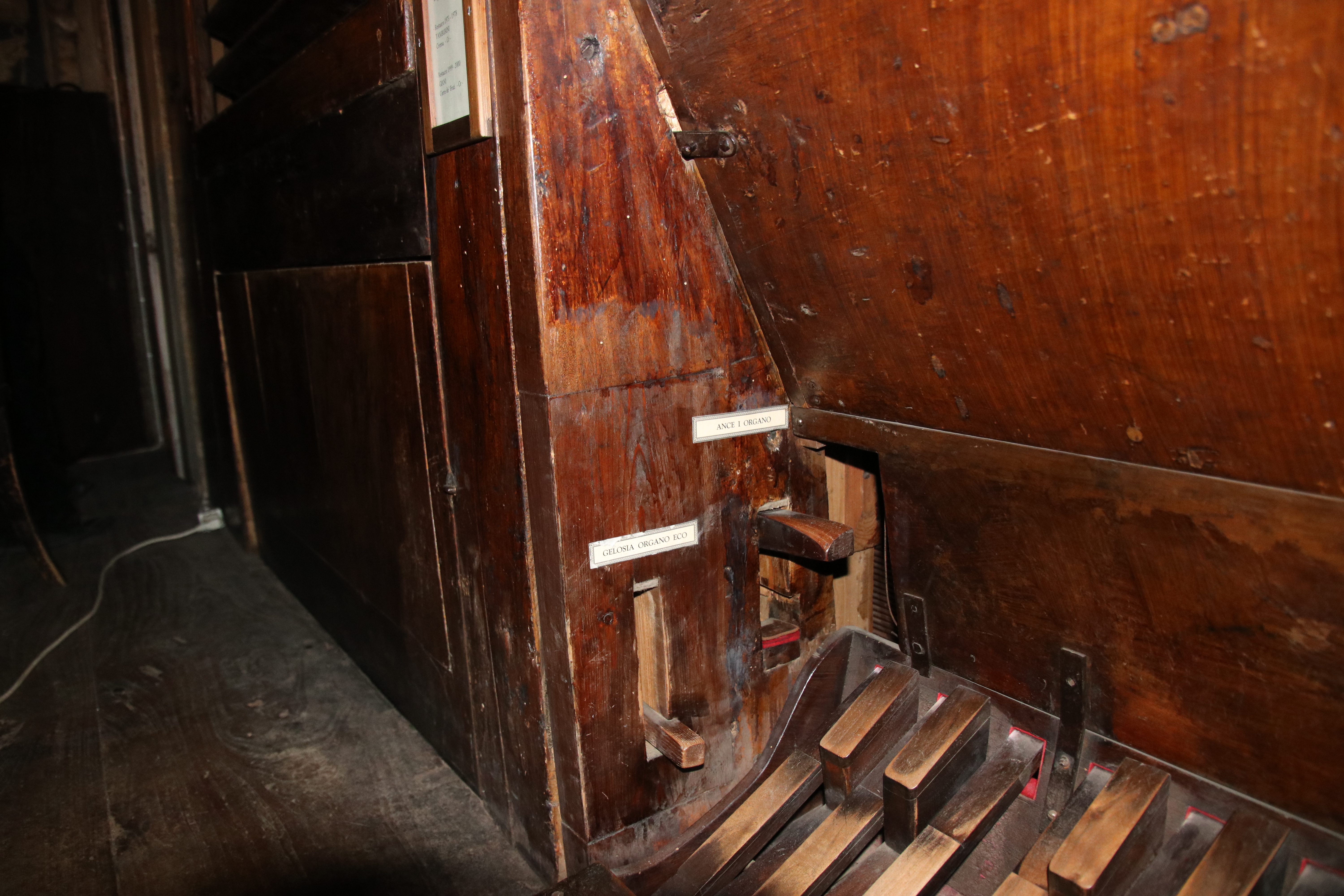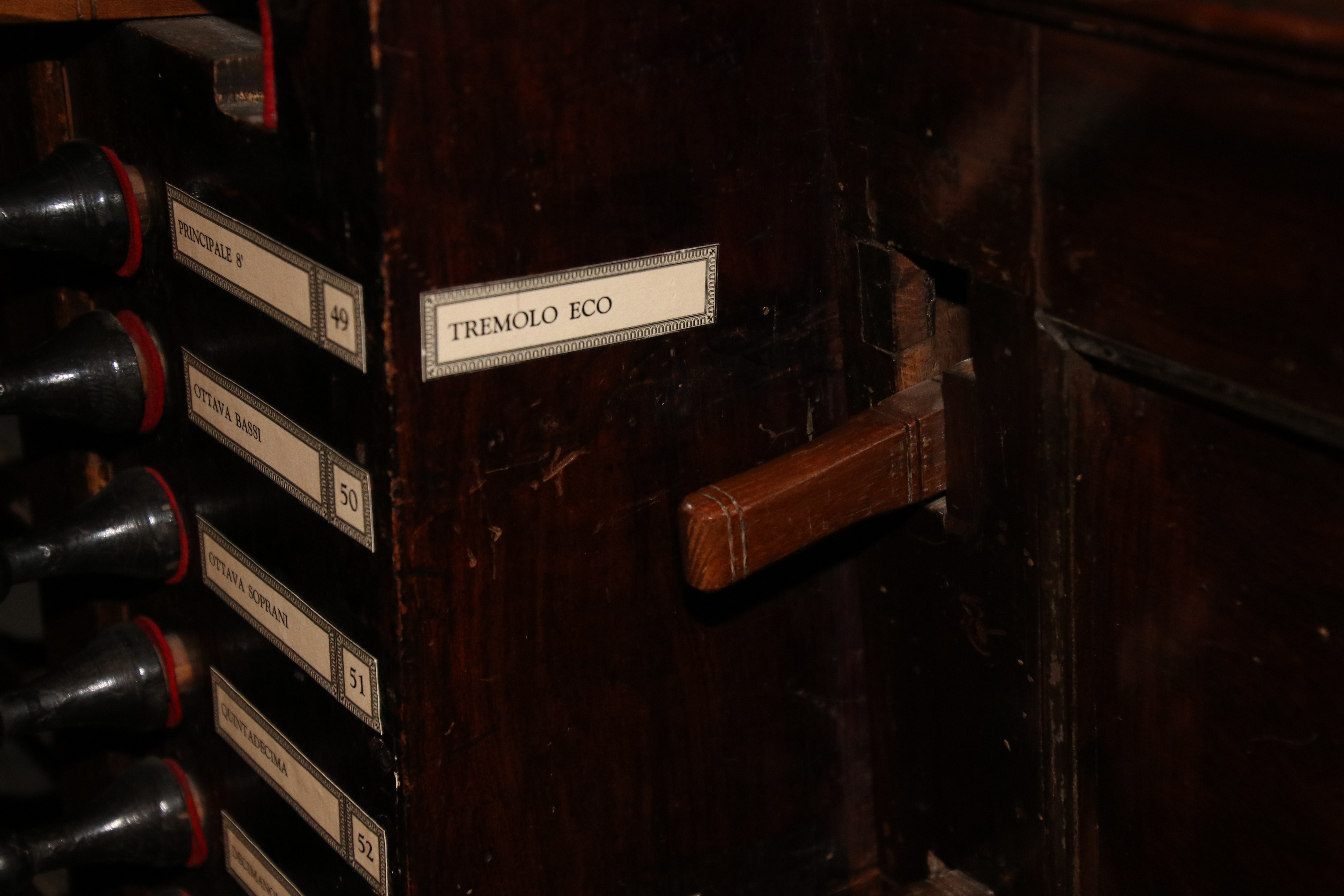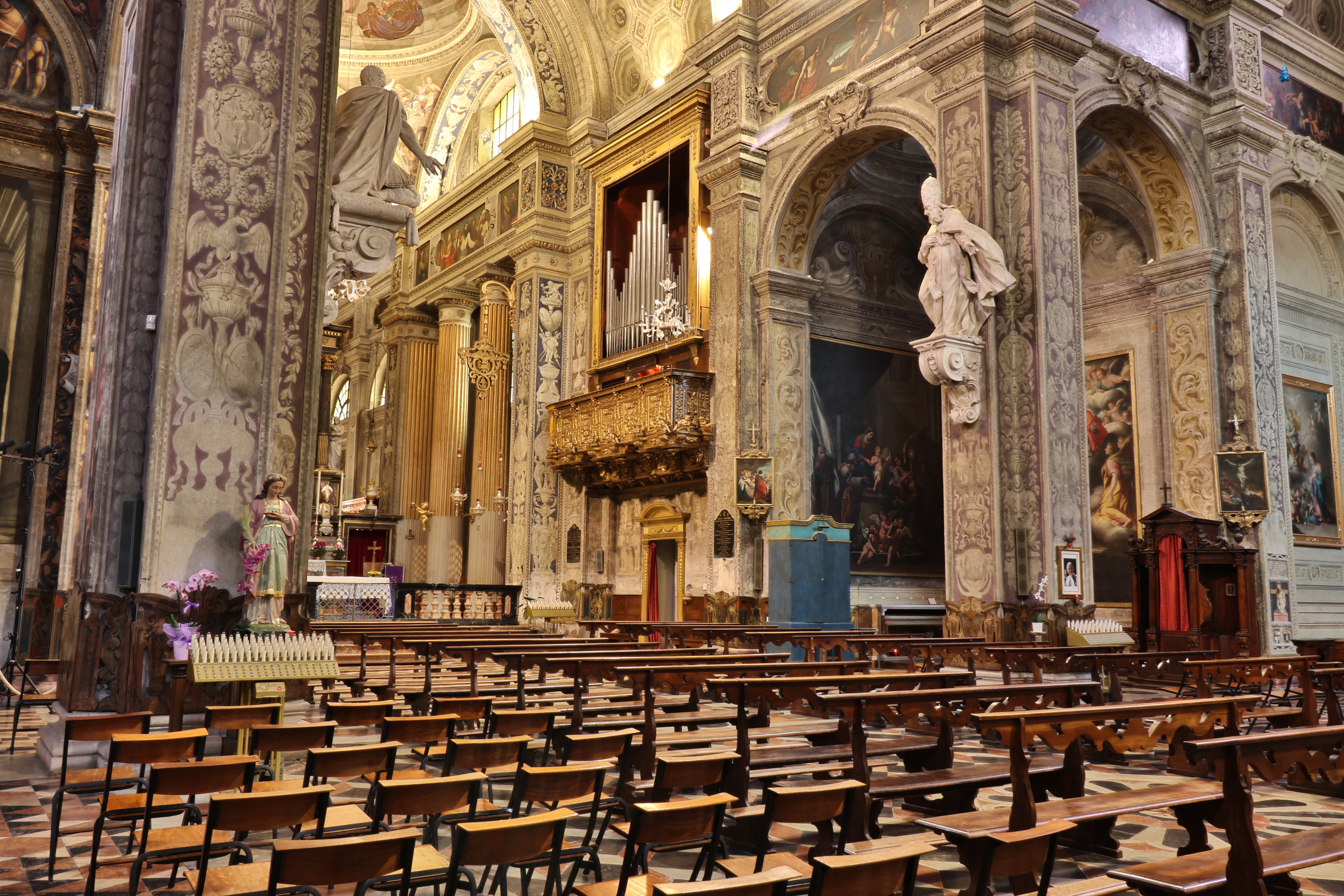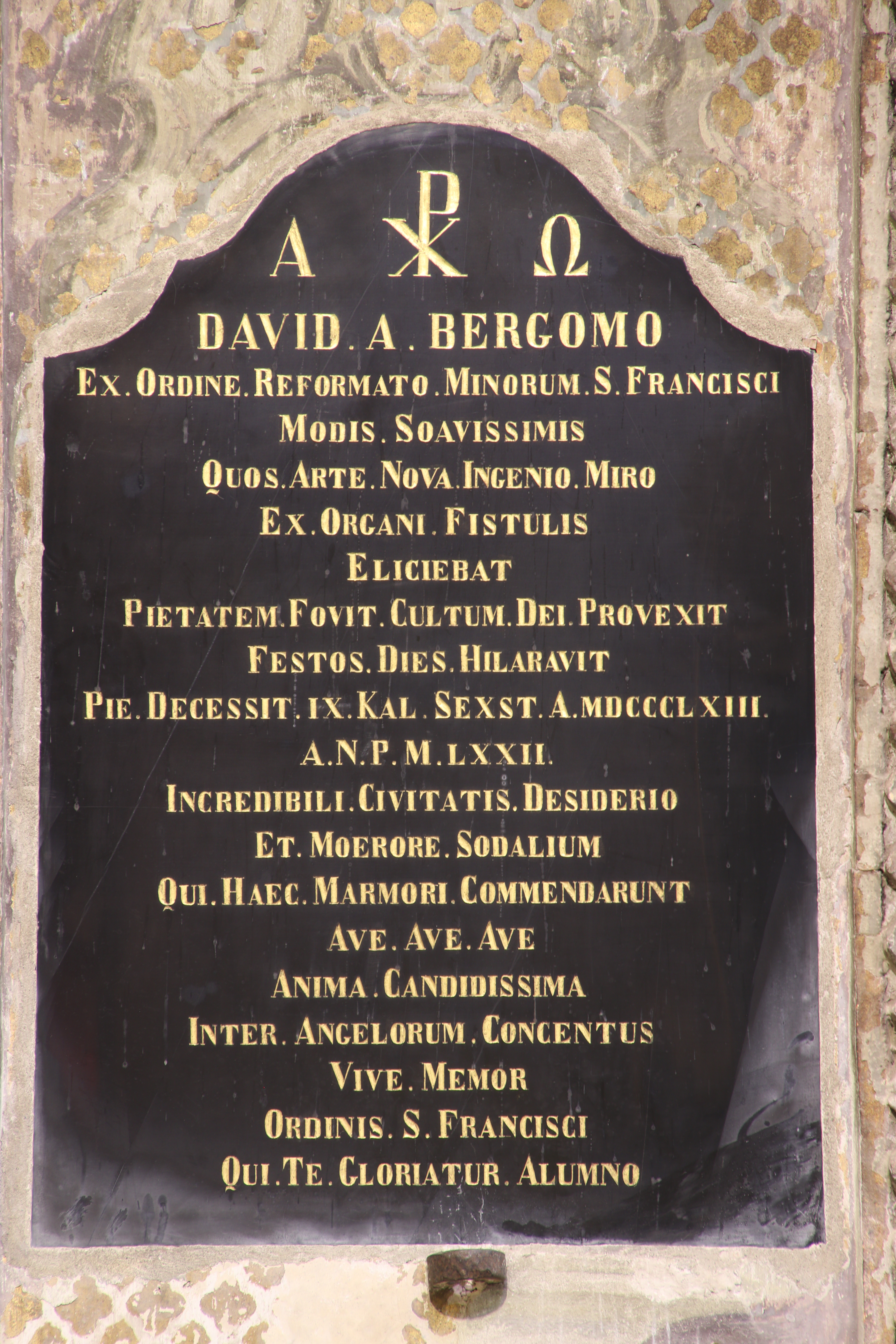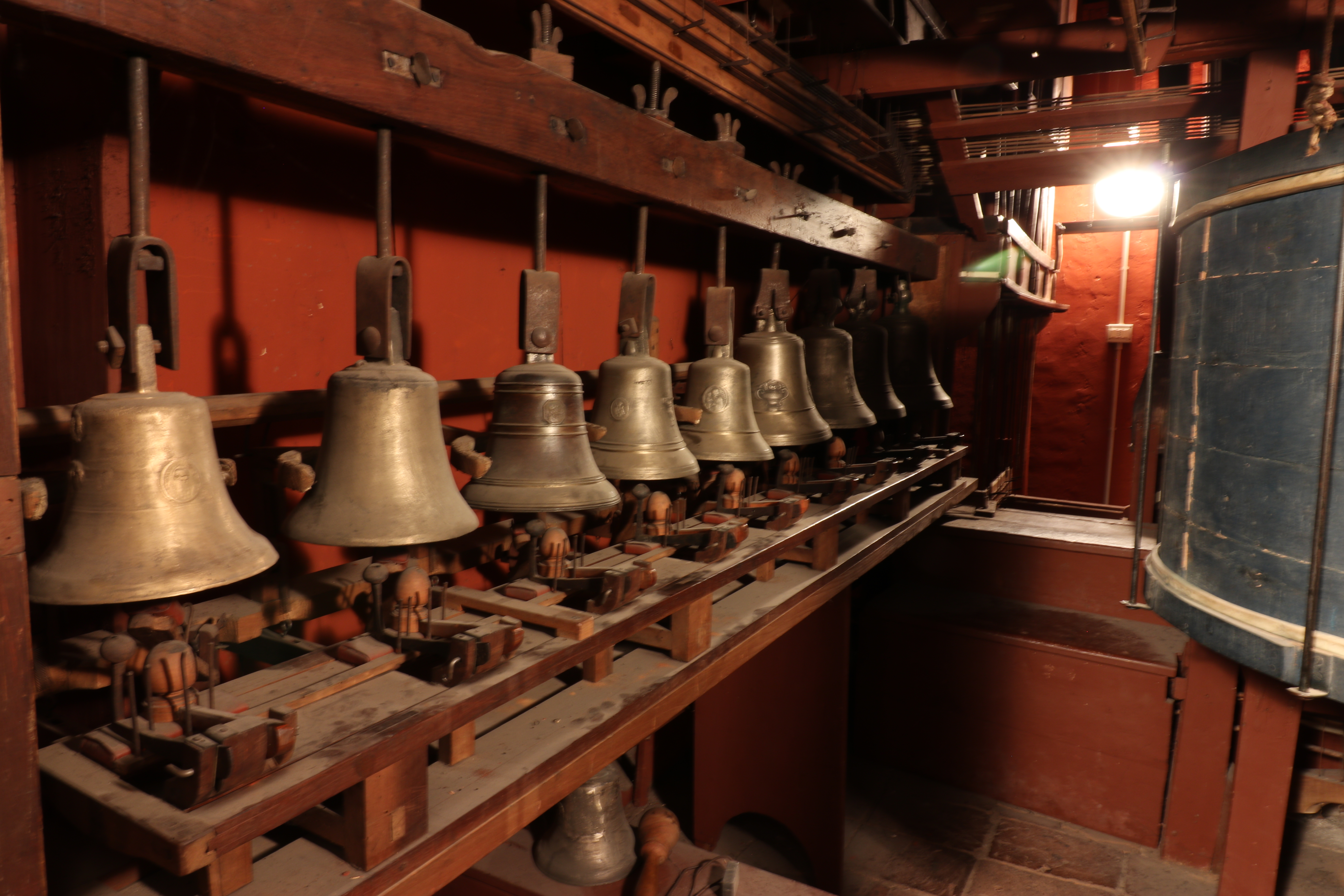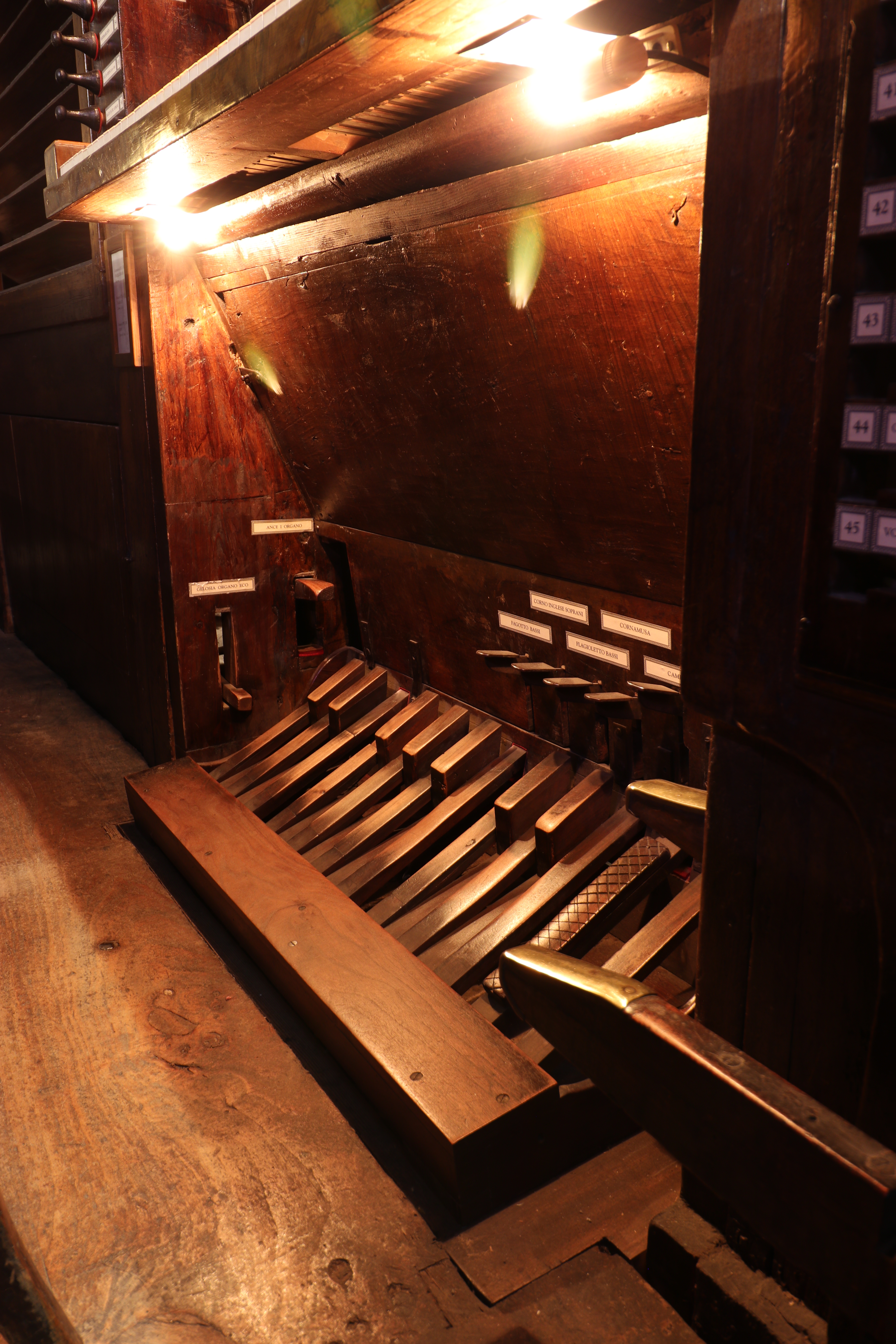Piacenza, Basilica di Santa Maria di Campagna
| Builder | Serassi |
|---|---|
| Year | ca. 1838 |
| Period/Style | Romantic |
| Stops | 57 |
| Keyboards | 2+P |
| Keyaction | tracker/mechanical |
| Sampleset |
Available
 , sampled by
Sonus Paradisi
, sampled by
Sonus Paradisi
|
The organ of the church in Santa Maria of Campagna in Piacenza (Saint Mary of Campagna located in Piacenza, Italy) was manufactured by the Serassi Brothers from Bergamo in two periods (1825 and 1838) under the supervision of Father Davide from Bergamo, the organist of the church and a noted composer of the period ("Padre Davide da Bergamo").
This organ is one of the most important Italian instruments due both to the fame of its makers (Serassi was the most popular manufacturer of organs in that period) as well as for the stop disposition and sound characteristics specifically wanted by Padre Davide. It fully reflects the orchestral taste of Italian organ music in the 1800s.
Thanks to the Serassi Brothers (and to Bossi, their rival/colleagues), beginning in the mid 1700s the small Italian organ started to gain an enrichment from new sounds intended to imitate instruments in the orchestra: the transverse flute (or Flutta), the English horn, the hunting horns, the trumpet, the bassoon, the piccolo, the cello, etc. To these pipe sounds were also added percussion effects like timpani, bells, and the bass drum (Turkish band).
All this additional color was obtained even while leaving the general dimensions quite small, especially if compared to contemporaneous organs outside Italy. This efficiency was accomplished due to the extensive use of "half registers." These stops did not play on the full keyboard, but only in the bass or treble half. In this way, pipe space was saved by offering to the organist the the use of two different registers simultaneously in the left and right hands.
The total effect was remarkably evocative of a real orchestra or band. On the organ it was therefore possible to play not only the religious repertoire for services but also secular pieces, ranging from orchestral to theatrical music, including sonatas, symphonies, and other freely-composed pieces. Italian music written for use in the liturgy (offertories, elevations, post-communion voluntaries, and versets) changed in style, becoming more brilliant and virtuosic. The organist was no longer a "mere servant" of the liturgy but instead became virtuoso: a concert player in the modern sense. In this process of organ and musical evolution, Padre Davide from Bergamo played a fundamental role.
Padre Davide was born in Zanica (just south of Bergamo) on January 21, 1791, under the name of Felice Moretti. He began organ study in 1806 with Davide Bianchi and continued later with Antonio Gonzales. He took composition lessons from Johann Simon Mayr. He was organist in various locations near Bergamo (Torre Boldone, Zanica, and Gandino). On July 25, 1818, Padre Davide took religious orders and joined the minor friars convent of S. Maria di Campagna in Piacenza, where he stayed for 45 years until his death in 1863.
During these years, Padre Davide wrote a large quantity of organ and vocal music (for the chorus of the friars of the basilica). He was highly sought-after throughout Italy to play for the dedications of new organs and was a true concert player, the first organist in a period that saw many virtuosi on other instruments (Viotti, Paganini, Bazzini, Bottesini, Carulli, Sivori). His activity was very intense: hundreds of concerts and active participation in numerous organ projects as a performer and consultant.
When Padre Davide arrived in Piacenza, the organ of the Basilica was a modest eighteenth century instrument by Cavalletti. Soon thereafter, Padre Davide began contact with the Serassi Brothers to seek an expansion of the old organ. The work was performed in two phases: a first stage in 1825 followed by the inclusion of the second manual in 1838.Selected pipes of Cavalletti were reused into the Organo Eco. Some of the pipes are probably even older, coming from the Giovanni Battista Facchetti who built the very first organ of the church around 1528.
In addition to the usual orchestral registers, Padre Davide wanted to include a unique special effect: the bells. These are real bells (an octave) which can be played in different ways, in the manuals or with the pedal. In occasion of the inauguration of the great instrument, Padre Davide wrote 15 organ pieces, published by Ricordi in 1838.
This organ is one of the most important Italian instruments due both to the fame of its makers (Serassi was the most popular manufacturer of organs in that period) as well as for the stop disposition and sound characteristics specifically wanted by Padre Davide. It fully reflects the orchestral taste of Italian organ music in the 1800s.
Thanks to the Serassi Brothers (and to Bossi, their rival/colleagues), beginning in the mid 1700s the small Italian organ started to gain an enrichment from new sounds intended to imitate instruments in the orchestra: the transverse flute (or Flutta), the English horn, the hunting horns, the trumpet, the bassoon, the piccolo, the cello, etc. To these pipe sounds were also added percussion effects like timpani, bells, and the bass drum (Turkish band).
All this additional color was obtained even while leaving the general dimensions quite small, especially if compared to contemporaneous organs outside Italy. This efficiency was accomplished due to the extensive use of "half registers." These stops did not play on the full keyboard, but only in the bass or treble half. In this way, pipe space was saved by offering to the organist the the use of two different registers simultaneously in the left and right hands.
The total effect was remarkably evocative of a real orchestra or band. On the organ it was therefore possible to play not only the religious repertoire for services but also secular pieces, ranging from orchestral to theatrical music, including sonatas, symphonies, and other freely-composed pieces. Italian music written for use in the liturgy (offertories, elevations, post-communion voluntaries, and versets) changed in style, becoming more brilliant and virtuosic. The organist was no longer a "mere servant" of the liturgy but instead became virtuoso: a concert player in the modern sense. In this process of organ and musical evolution, Padre Davide from Bergamo played a fundamental role.
Padre Davide was born in Zanica (just south of Bergamo) on January 21, 1791, under the name of Felice Moretti. He began organ study in 1806 with Davide Bianchi and continued later with Antonio Gonzales. He took composition lessons from Johann Simon Mayr. He was organist in various locations near Bergamo (Torre Boldone, Zanica, and Gandino). On July 25, 1818, Padre Davide took religious orders and joined the minor friars convent of S. Maria di Campagna in Piacenza, where he stayed for 45 years until his death in 1863.
During these years, Padre Davide wrote a large quantity of organ and vocal music (for the chorus of the friars of the basilica). He was highly sought-after throughout Italy to play for the dedications of new organs and was a true concert player, the first organist in a period that saw many virtuosi on other instruments (Viotti, Paganini, Bazzini, Bottesini, Carulli, Sivori). His activity was very intense: hundreds of concerts and active participation in numerous organ projects as a performer and consultant.
When Padre Davide arrived in Piacenza, the organ of the Basilica was a modest eighteenth century instrument by Cavalletti. Soon thereafter, Padre Davide began contact with the Serassi Brothers to seek an expansion of the old organ. The work was performed in two phases: a first stage in 1825 followed by the inclusion of the second manual in 1838.Selected pipes of Cavalletti were reused into the Organo Eco. Some of the pipes are probably even older, coming from the Giovanni Battista Facchetti who built the very first organ of the church around 1528.
In addition to the usual orchestral registers, Padre Davide wanted to include a unique special effect: the bells. These are real bells (an octave) which can be played in different ways, in the manuals or with the pedal. In occasion of the inauguration of the great instrument, Padre Davide wrote 15 organ pieces, published by Ricordi in 1838.
| Organo Eco | Grand'Organo | Pedale |
|---|---|---|
| Principale 8' | Principale bassi 16' | Contrabassi e Ottave 16' |
| Ottava bassi 4' | Principale soprani 16' | Timballi in tutti i toni |
| Ottava soprani 4' | Principale bassi 8' | Timballi in cinque toni |
| Quintadecima 2' | Principale soprani 8' | Bombarde 16' |
| Decimanona 1 1/3' | Principale II bassi 8' | Tromboni 8' |
| Vigesimaseconda 1' | Principale II soprani 8' | Campane di voce naturale (loud bells, C-c0) |
| Due di Ripieno 2x | Ottava bassi 4' | Campane di tuba dolce (soft bells, C-c0) |
| Flauto in VIII soprani 4' | Ottava soprani 4' | |
| Violoncello soprani 16' | Ottava II 4' | |
| Arpone bassi 16' | Duodecima 2 2/3' | |
| Campane di armonia (soft bells, c1-c2) | Quintadecima 2' | |
| Decimanona 1 1/3' | ||
| Due di Ripieno I 2x | ||
| Due di Ripieno II 2x | ||
| Due di Ripieno III 2x | ||
| Due di Ripieno IV 2x | ||
| Due di Ripieno V 2x | ||
| Cornetto I 2x | ||
| Cornetto II 2x | ||
| Fagotto bassi 8' | ||
| Tromba soprani 16' | ||
| Clarone bassi 4' | ||
| Clarino bassi 2' | ||
| Corno Inglese soprani 16' | ||
| Cornamusa soprani 8' | ||
| Oboe soprani 8' | ||
| Violone bassi 8' | ||
| Viola bassi 4' | ||
| Violetta soprani 8' | ||
| Flutta soprani 8' | ||
| Fluttina bassi 2' | ||
| Corni da Caccia soprani 16' | ||
| Flauto in VIII 4' | ||
| Flauto in XII bassi 2 2/3' | ||
| Flauto in XII soprani 2 2/3' | ||
| Flagioletto bassi 1/2' | ||
| Ottavino soprani 2' | ||
| Voce Umana soprani 8' | ||
| Campanelli soprani (small bells) |
1543743790-Versetto Quirici
0:00
0:00
1543696540-Versetto - Padre Davide da Bergamo
0:00
0:00
1543783020-davide diffuse
0:00
0:00
1543696285-Versetto G Quirici
0:00
0:00
https://www.sonusparadisi.cz/en/organs/italy/piacenza-organo-di-padre-davide.html
 Pipe Organ Map
Pipe Organ Map
